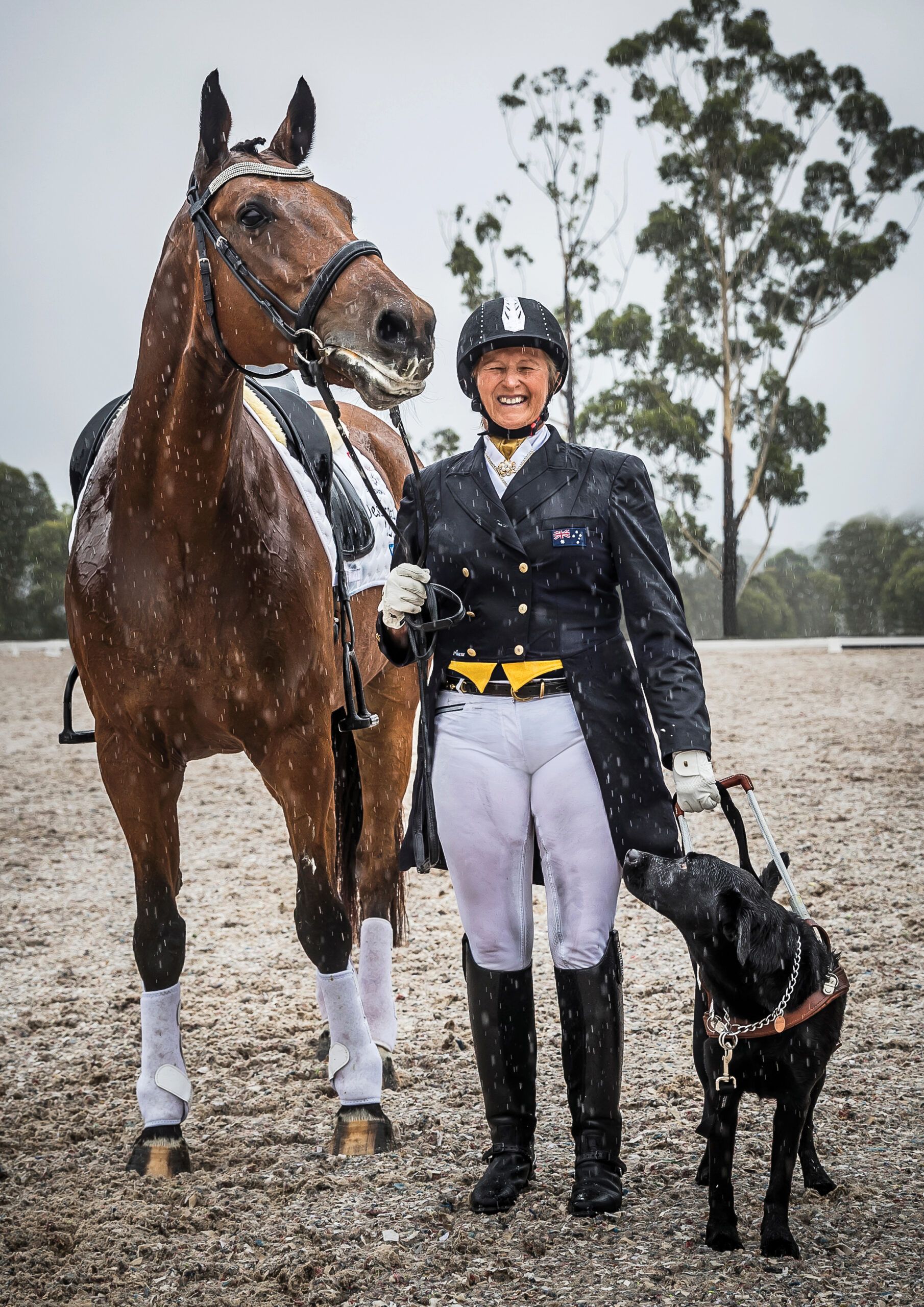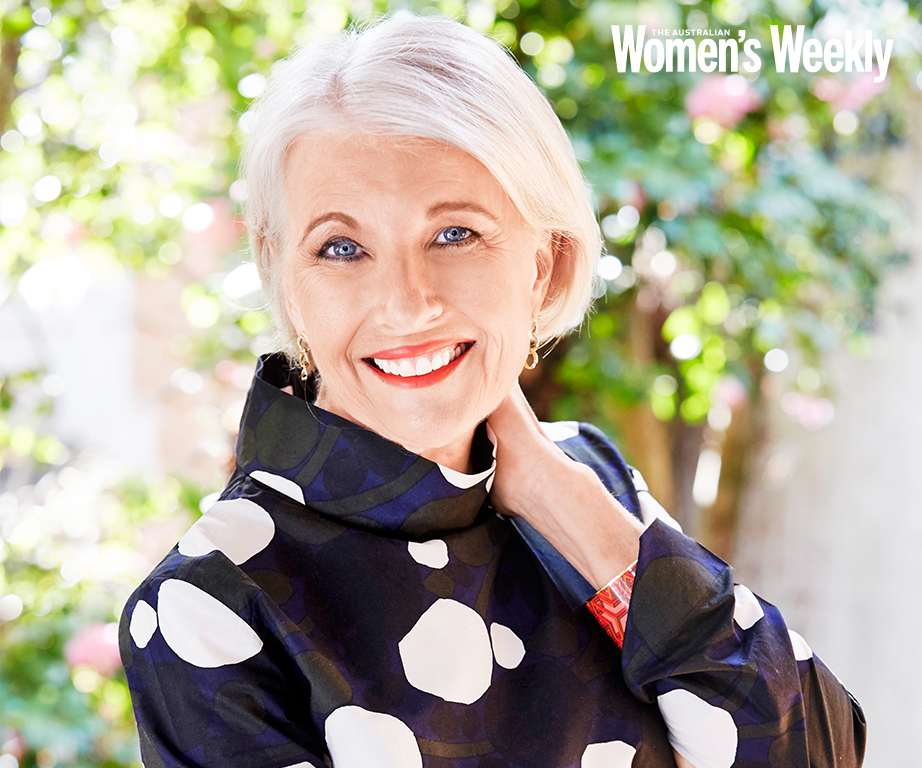When Yvette Coppersmith won this year’s Archibald portrait prize, she was only the tenth woman in its 97-year history to do so. It’s also the first year women have taken out “the trifecta”: the Archibald (with Coppersmith’s “Self-Portrait after George Lambert”); the Wynne (with Yukultji Napangati ‘s “Untitled” landscape); and the Sulman Prize (with Kaylene Whiskey’s “Kaylene TV”).
Eighty years earlier, in 1938, The Daily Telegraph reported that Nora Heysen was in the kitchen slicing carrots for a stew an hour after winning the Archibald for her portrait of a consul’s wife. As if to reassure readers that this woman knew her place, the reporter described Nora as “pretty, blue-eyed, fair, and her skin is very clear”. But the winner of the £450 prize was no demure dauber of society wives.
“There is no reason whatever why women should not be as good painters as men,” said the 27-year-old artist, and first woman to win the prestigious prize. “The difficulty is that they get married and are tied up to domestic life. I am going to choose painting instead of marriage.” She did, and later became the first woman to be appointed an Australian war artist.

Archibald Prize 1938 winner Nora Heysen ‘Mme Elink Schuurman’ 1938
Private collection © Lou Klepac.
Photo: Art Gallery of NSW
Meanwhile, newspaper op-ed pieces crackled with patriarchal indignation at her Archibald win. Critics and fellow artists howled derisively and some even called for a government inquiry into the prize’s judging. “Art should not be chosen before the chance of a happy marriage,” thundered fellow artist Max Meldrum in The Brisbane Telegraph. “Men and women are differently constituted; women are more closely attached to the physical things of life – they cannot help it – and to expect them to do some things equally as well as men is sheer lunacy. A great artist … becomes great only by exerting himself to the limit of his strength the whole time. Such a life is unnatural and impossible for a woman.”
In 1938 The Australian Women’s Weekly interviewed Nora. Put back in the kitchen for a story headlined “Girl Painter Who Won Art Prize is also Good Cook”, Nora shared her recipes for Hungarian Goulash, Duck with Olive Sauce and Chilean Stuffed Green Peppers. “Thousands of years of domestic routine have trained women to do their housework in the morning,” Nora told The Weekly. “I generally do my housework and meal preparations early and leave the afternoon free for painting.”
Even though Nora was an established artist when she won the Archibald, the press widely reported Nora’s father, respected artist Hans Heysen, “kept an eye on her work” and that, in the trustees opinion, her portrait “seemed the best of a not very exciting entry”.
“It is impossible for a woman to win again,” artist Judy Cassab despaired in 1955, describing the Archibald judges as “fuddy-duddies”. Four years later, she would become the second woman to win the Archibald. Her portrait of fellow artist, Stanislaus Rapotec, was regarded as “modern” and controversial, and she was reported to be engaging in the feminine pastime of “sunbathing” when the award was announced. As if to justify a female winner, the gallery again insisted that the general standard of entries was low and one critic asked whether it might have been better not to award a prize at all.

Archibald Prize 1967 winner Judy Cassab ‘Margo Lewers’ 1967
Photo: Art Gallery of NSW
Judy said she was “completely flabbergasted by the win, especially being a woman”. She had entered the Archibald every year since immigrating to Australia from Hungary and settling in Sydney in 1951. Judy won again in 1967, and half a century later was still among this country’s most successful portraitists and an inspiration and mentor to two generations of women artists.
Wendy Sharpe is one of Australia’s most significant contemporary artists. She has won the Portia Geach Memorial Award (twice), the Sulman Prize and in 1996 she became
just the fourth woman to take home the Archibald. Wendy says that, while the art world is not the bastion of chauvinism that it was in Nora Heysen and Judy Cassab’s days, there is a way to go. “I am still referred to as a woman artist,” the 58-year-old says. “Men are never referred to as a man artist. Whenever I hear that, I think it sounds like ‘you’re pretty good – for a woman’.”

Archibald Prize 1996 winner Wendy Sharpe ‘Self-portrait as Diana of Erskineville’ 1996
Collection of King St on Burton Gallery, Sydney © Wendy Sharpe. Licensed by Viscopy, Sydney.
Photo: Art Gallery of NSW
Wendy says the art world is not so different to the rest of society when it comes to gender stereotyping. “For women in the public eye, not just artists, it is about how you look,” she insists. “A man can be getting around half shaven, in clothes covered in paint, with wild hair and buttons off his shirts and coats, and everyone thinks ‘what a bohemian’.” A woman presenting in such a dishevelled state? Not so unconventional and arty. “She’d be told to go do her hair and clean up.”
Yvette Coppersmith has been painting portraits since she was a teenager, and teaches portraiture at the National Gallery in Victoria. The 38-year-old has had five portraits entered in the Archibald Prize. Before starting work on her winning 2018 self-portrait, Coppersmith asked to paint New Zealand Prime Minister Jacinda Ardern. “Female power is what this portrait is about,” says Archibald prize curator Anne Ryan. “Having been disappointed in not being able to paint Jacinda Ardern, Yvette still wanted to channel that – a woman from her own generation; the challenges Jacinda is facing with leadership and the nonsense she has to deal with as a woman in that position.”
Anne is interested in the way women’s representation as subjects has changed. “Nora Heysen painted a society wife, but now we have images of very powerful women: lawyers, [Chief Justice Susan Kiefel and Sally Dowling SC], a premier [Gladys Berejiklian], a choreographer [Meryl Tankard], TV personalities and actors, [Vivian Chan Shaw and Alison Whyte], so this immediately sets the scene for diversity,” says Anne.
“Women’s images, throughout art history, have often been constructed by men,” says Yvette. But as more women become active in the arts and as gender parity is reached amongst entries to the Archibald and other awards, “we are opening up the scope of what it means to be a woman … reinventing and growing and trying new looks on”.
Anne is quick to point out that the gender parity in the awards is an organic result, that it has been a slow process and there has been no tokenism. “It’s a natural thing,” she says, “The judges are not looking to tick off gender, but we have reached this point where the representation of women is higher.”
Nora, who lived for art in spite of obstacles put in her way, would surely be delighted by this year’s result. “Miss Heysen finds that painting occupies so much of her time that
she has little opportunity to do anything else,” The Telegraph reported. “She has given up her tennis playing, but still finds time for reading.” “If I am painting,” the trailblazing Miss Heysen told The Weekly in 1938, “I cannot turn my mind to how the dinner is cooking.”
The Archibald, Wynne and Sulman prizes run at the Art Gallery of NSW until 9 Sept; then on tour 22 Sept – 17 June. Visit artgallery.nsw.gov.au for dates, venues and information.

